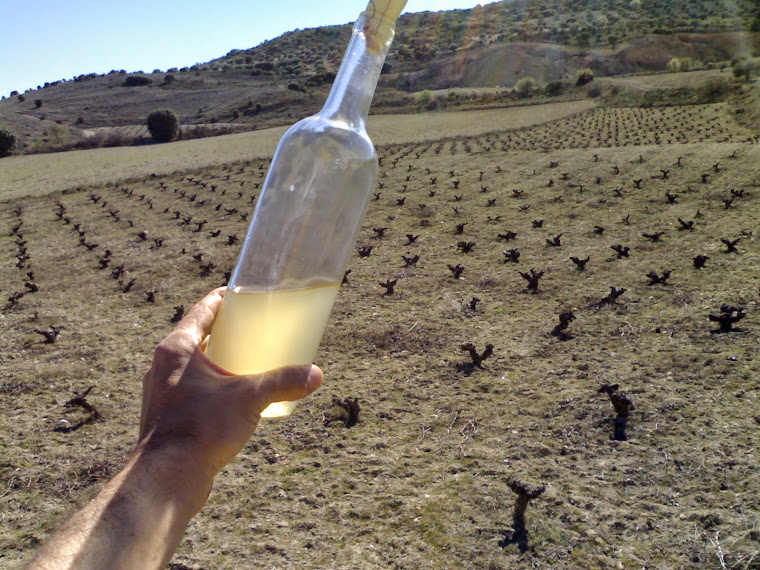In 2008 it was in the El Patio Maravillas; in 2007 in Off-Limits and in 2006 in the old Seco Social Centre.
We would like to say thanks to the over 40 people who came the other night. I think we all had a great time and we even learned a thing or two, thanks to Alberto (from Bodegas Corral, in Navarrete, La Rioja), who led the tasting in a very pleasant, informal and informative manner and even made people participate actively (as opposed to just 'listening to the expert'!).
According to my (sketchy) notes, here are some of the comments and impressions of the wines:
Blanco Joven 2009 (100% Airén)
Colour: pale yello, slightly golden, sort of greenish
Still, no bubbles (last year the same wine was like cava or cider!)
Aroma: wine (!), alcohol, apple, vainilla, fruit, flowers
Taste: not a lot of taste!, green apples, slightly acidic, very nice, a bit like cava
Surprisingly, the young white had a lot of body, aromas and taste. Historically, Airén has been considered not suitable for making quality wine, and has always been used either for mixing with other wines or sent directly to the distillery. Well, it seems that it dosn't have to be that way, and that it is if fact possible to make quality wine with Airén (maybe due to the artisan (non-industrial) processes and/or organic ecological practices). :)
Crianza 2008 (100% Tempranillo)
Colour: very intense, dark read, almost opaque
Aroma: strong, forest in the rain, toasty, red fruit (cherries)
Taste: astringent, strong, red fruit, tonacco
Needs more time in the bottle to round off and improve
We only had time to taste two of the three wines we had: the Young White 2009 and the Crianza 2008 (we'll have to do the young rosé some other time).
Note the lack of labels. The plan is to update the previous Crianza label, and to design for the first time labels for the young white and the young rosé. Hopefully in January or February.
- Young White 2009 (100% Airén; 12% vol.)
- Young Rosé 2009 (97% Garnacha, 3% Cabernet Sauvignon; 13% vol; carbonic maceration)
- Crianza 2008 (100% Tempranillo, 6 months in oak barrel; 14% vol.)
I'm sure I've forgotten to mention lots of things that were said (what with all that tasting and chatting I had to do!), so if anyone who was there would like to add anything, just click on the "comments" below and type away! :)
















































